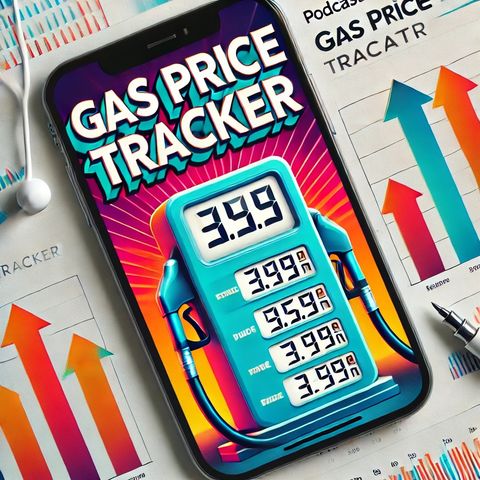Gas Prices in USA explained key factors impacting $3.80 national average for November 2024

Descarga y escucha en cualquier lugar
Descarga tus episodios favoritos y disfrútalos, ¡dondequiera que estés! Regístrate o inicia sesión ahora para acceder a la escucha sin conexión.
Gas Prices in USA explained key factors impacting $3.80 national average for November 2024
Esta transcripción es generada automáticamente. Ten en cuenta que no se garantiza una precisión absoluta.
Descripción
As of November 6, 2024, gas prices in the United States are experiencing a fluctuating state influenced by several key factors. The national average for a gallon of regular gasoline...
mostra másA significant driver of fuel prices is the global oil market, where crude oil prices have recently seen moderate increases. These changes often stem from supply and demand dynamics, with ongoing geopolitical tensions in oil-producing regions, such as the Middle East, affecting supply. OPEC (Organization of the Petroleum Exporting Countries) has made strategic decisions to adjust production levels in response to global economic conditions, which in turn impacts oil prices. Notably, any disruptions or speculations regarding oil supply chains can lead to immediate shifts in prices.
Domestically, the U.S. continues to balance its role as one of the world's leading oil producers with its consumption needs. The advancements in drilling technologies, such as hydraulic fracturing, have enabled increased oil production, thereby affecting the supply side of the equation. However, factors such as maintenance at refineries, natural disasters, or technical issues can temporarily reduce production capacity, influencing pump prices. Additionally, policy changes or regulatory measures geared toward environmental concerns, such as ethanol blending mandates or carbon tax policies, can also affect pricing structures.
Consumer demand is another critical variable in gas pricing. Seasonal patterns typically witness a rise in demand during summer months due to increased travel and vacationing, often leading to higher prices. Conversely, as the nation approaches the end of the year, demand tends to stabilize, which can sometimes result in slightly lower prices or slower increases. However, economic factors, such as inflation rates or changes in transportation habits, can alter these traditional patterns.
Technological advancements continue to play a role, with a growing shift toward electric vehicles (EVs) affecting gasoline consumption. As more consumers opt for EVs, the long-term demand for gasoline is projected to decrease, potentially stabilizing prices over time. However, this transition is gradual, and gas remains a primary energy source for transportation across the country.
Lastly, the strength of the U.S. dollar compared to other currencies can also influence gas prices. A strong dollar generally makes oil cheaper for U.S. consumers, though it can lead to reduced export competitiveness, while a weaker dollar might reflect higher domestic prices due to increased import costs.
In conclusion, the current gas prices in the U.S. are a result of various interconnected factors, from global market dynamics and domestic production to seasonal demand shifts and technological trends. While today's prices may be slightly elevated, they remain a reflection of both immediate influences and broader economic trends that continue to shape the energy landscape. Understanding these factors gives listeners a comprehensive view of why they pay what they do at the pump.
Información
| Autor | QP-5 |
| Organización | William Corbin |
| Página web | - |
| Etiquetas |
Copyright 2024 - Spreaker Inc. an iHeartMedia Company

Comentarios